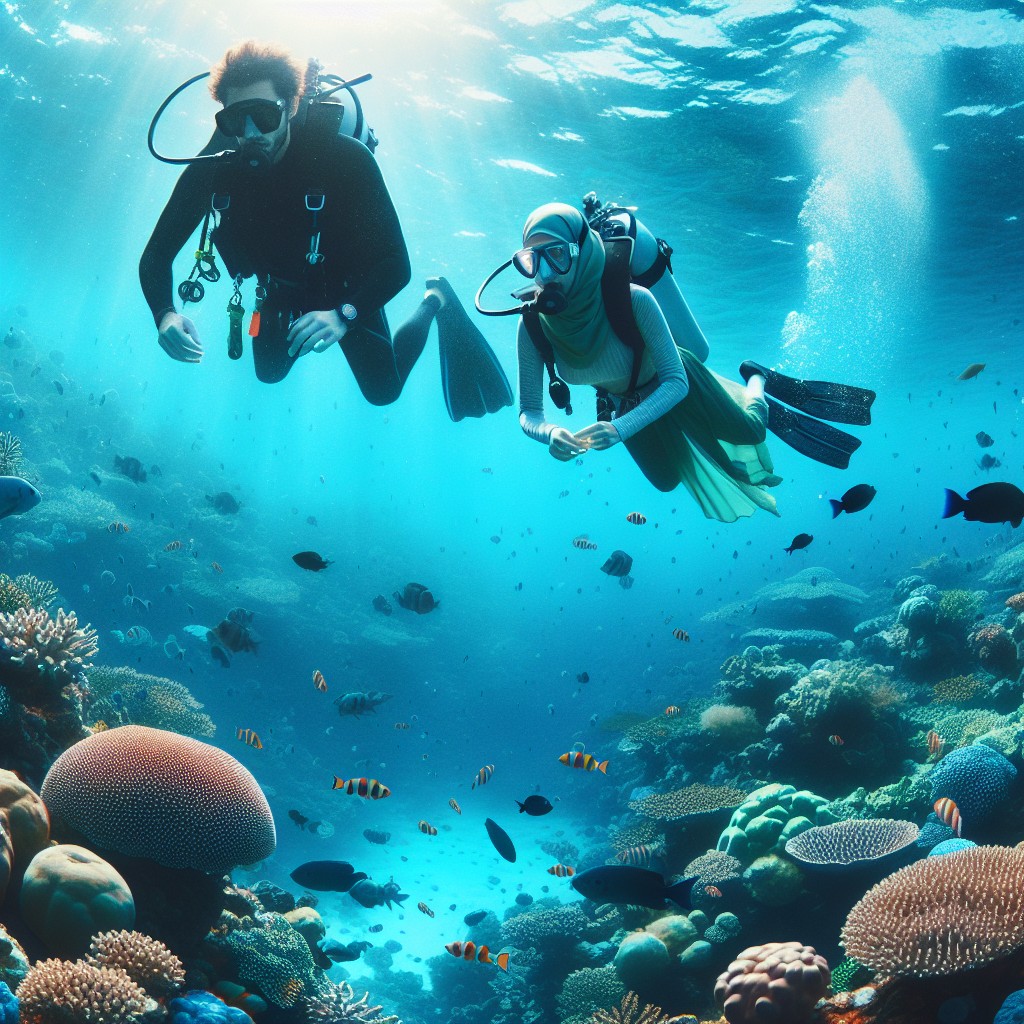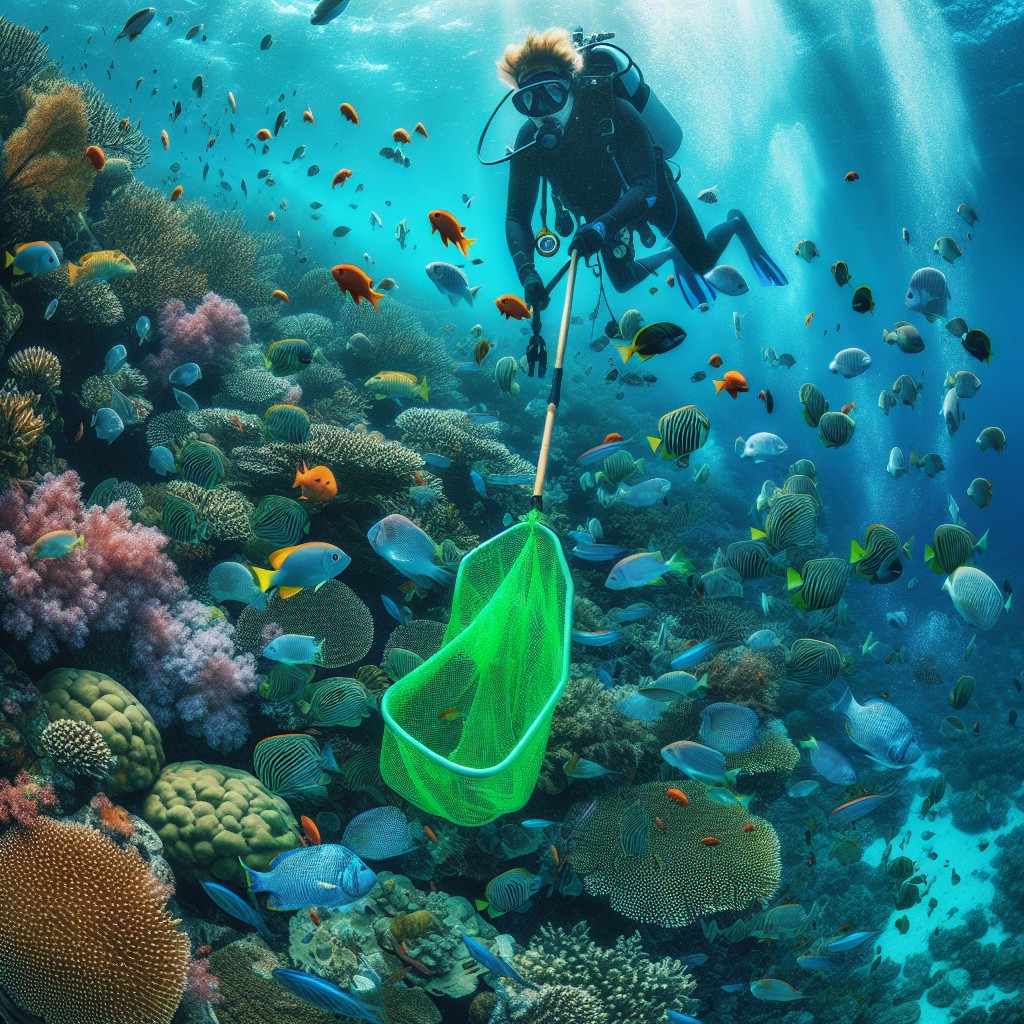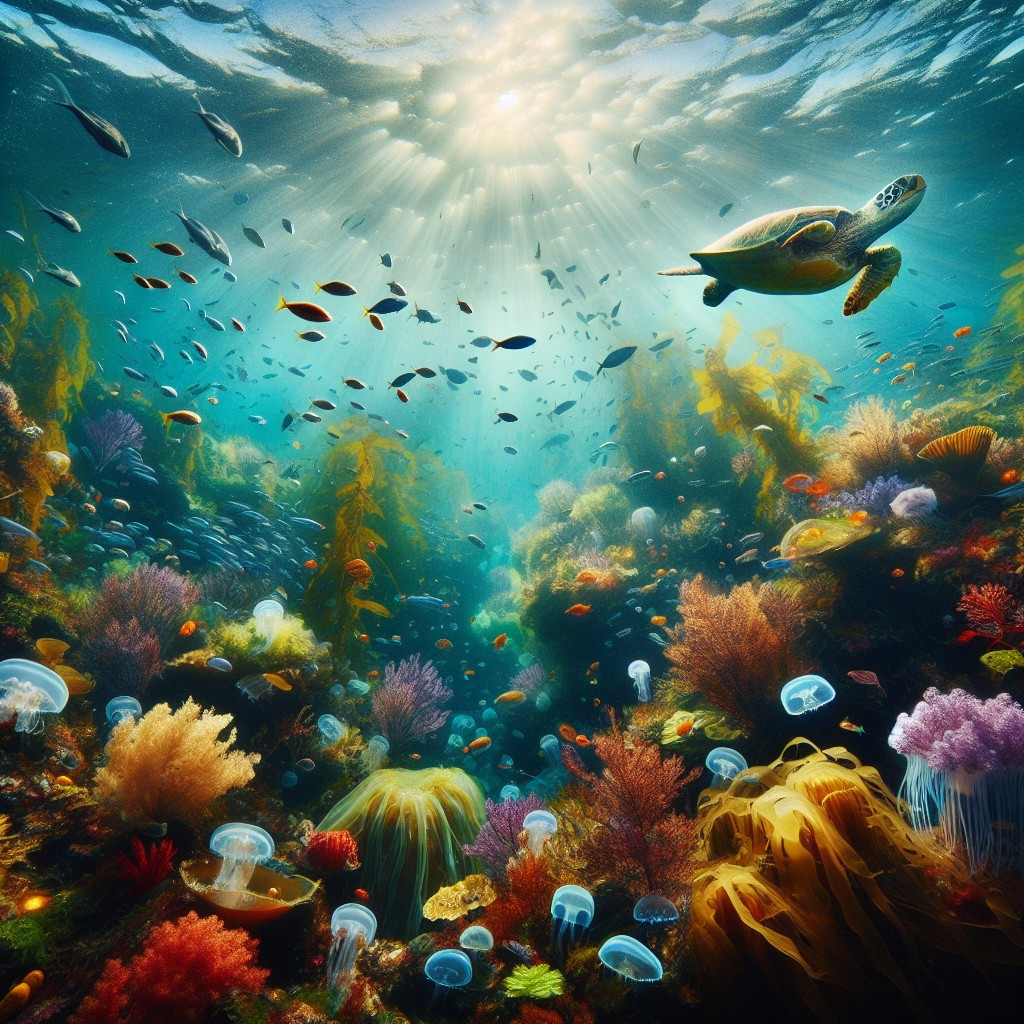Scuba Diving Seasons in Japan
Japan presents a unique environment for scuba diving enthusiasts, offering various seasons and conditions that can cater to different diver preferences. Understanding the seasonal changes can help divers determine the best time of year for scuba diving in Japan.
Summer Diving in Japan
The summer months from June to August are considered the prime season for scuba diving in Japan. During this period, the waters are warming up, providing ideal conditions for divers. The peak manta ray spotting season occurs specifically in Ishigaki Island, Okinawa, from July through September, where record numbers of mantas swarm the area to feed on plankton.
Key benefits of summer diving include:
| Aspect | Details |
|---|---|
| Water Temperature | Generally ranges from 24°C to 30°C (75°F to 86°F) |
| Visibility | Often exceeds 30 metres (98 feet) |
| Marine Life | Abundant with visible activity, especially pelagic species |
Year-Round Diving Opportunities
In addition to summer diving, Japan boasts year-round diving opportunities owing to its relatively mild climate. Various regions, including Okinawa, provide warm waters that are conducive for scuba diving throughout the year (Surface Interval).
Ishigaki Island is particularly noted for its rich marine biodiversity, where divers can encounter a range of species while exploring depths of less than 16 meters (50 feet) over volcanic rock formations (PADI).
Overall, divers can look forward to various unique experiences across all seasons, from exploring shipwrecks during the winter months to spotting unique marine life in the warmer seasons. For more details on diving locations, check out our guide on best dive sites in Japan.
Top Dive Sites in Japan
When planning a dive holiday, choosing the right destination is key to an unforgettable experience. Japan offers various unique dive sites, each providing its own allure. The following sections highlight three top dive sites: Ishigaki Island for manta rays, the Shiretoko Peninsula for ice diving, and Yonaguni Island for hammerhead sharks.
Manta Ray Season in Ishigaki Island
Ishigaki Island, part of Okinawa, is renowned for its vibrant marine life, particularly the majestic manta rays. The peak spotting season for these magnificent creatures is from July to September. During this time, divers can witness record numbers of mantas flocking to the waters to feed on abundant plankton.
| Month | Manta Ray Sightings |
|---|---|
| July | Peak Season |
| August | Peak Season |
| September | Peak Season |
For divers seeking to encounter these graceful animals, visiting Ishigaki significantly enhances the chance of a breathtaking experience. Those interested in diving with manta rays can read more about this in our article on diving with manta rays in Japan.
Ice Diving in Shiretoko Peninsula
For a completely different diving experience, the Shiretoko Peninsula located on Hokkaido Island offers ice diving from January to March. As the sea ice begins to break up, divers can explore underwater landscapes with impressive visibility, typically around 20 meters (66 feet). This unique diving experience attracts adventurous divers looking to uncover the beauty of freezing waters (PADI).
| Month | Visibility (meters) |
|---|---|
| January | 20 |
| February | 20 |
| March | 20 |
Divers who wish to experience this remarkable environment can find more insights in our article on ice diving in Hokkaido.
Hammerhead Sharks in Yonaguni Island
Yonaguni Island, also in Okinawa, captivates divers with the opportunity to see hammerhead sharks. These striking creatures migrate through the area from November to June, making it an ideal time for shark enthusiasts. The underwater ruins of Yonaguni, coupled with the shark sightings, create a powerful attraction for divers.
| Month | Hammerhead Shark Sightings |
|---|---|
| November | Active Season |
| December | Active Season |
| January | Active Season |
| February | Active Season |
| March | Active Season |
| April | Active Season |
| May | Active Season |
| June | End of Season |
Divers eager to discover more about diving with these captivating creatures can explore our article on diving with sharks in Japan.
These dive sites exemplify the diversity and excitement that Japan offers to scuba divers. Whether it’s swimming with manta rays, exploring icy depths, or encountering hammerhead sharks, there are numerous opportunities to experience the best of underwater life in Japan. For further details on additional dive sites, visit our guide on the best dive sites in Japan.
Unique Diving Experiences
Japan offers a wealth of unique diving experiences that cater to many interests. From wreck dives to vibrant marine life, here are three exceptional opportunities for divers.
Wreck Diving in Chichijima
Chichijima, part of the Ogasawara Islands, is often dubbed ‘the Galapagos of the Orient’. This destination provides remarkable wreck diving opportunities, featuring numerous sunken ships from World War II located just off the coast. Divers can explore these historical sites while also having the chance to spot migrating humpback whales from December through March (PADI).
| Wreck Dive Highlights | Details |
|---|---|
| Location | Chichijima, Ogasawara Islands |
| Best Time for Whale Watching | December – March |
| Type of Wrecks | WWII Shipwrecks |
Experience the thrill of exploring underwater ruins while taking in the stunning biodiversity around Chichijima. For more information on wreck diving opportunities, check our section on wreck diving in Japan.
Marine Life in Ishigaki Island
The waters surrounding Ishigaki Island in Okinawa are renowned for their thriving marine life. This area is a hotspot for divers wishing to observe manta rays, often seen while descending to depths of less than 16 meters (50 feet) over volcanic rock formations. Ishigaki Island is also known for its diverse ecosystems, which include pristine coral reefs and a variety of marine species, such as turtles, sharks, and nudibranchs (PADI; Blue Japan).
| Marine Life Highlights | Details |
|---|---|
| Main Attractions | Manta Rays, Coral Reefs |
| Diving Depth | Less than 16 meters (50 feet) |
| Common Species | Sea Turtles, Sharks, Nudibranchs |
For more insights into the captivating sea life around Japan, visit our guide on marine life in Japan waters.
Hammerhead Sharks in Yonaguni Island
Divers have the unique opportunity to witness hammerhead sharks in large schools off the coast of Yonaguni Island between November and June. Furthermore, from May to June, massive whale sharks can be observed feeding in the surrounding waters of Okinawa (Mares).
| Hammerhead Shark Schedule | Details |
|---|---|
| Best Months | November – June |
| Additional Offerings | Whale Sharks (May – June) |
This experience is perfect for those who seek exhilarating encounters with these magnificent creatures. Explore underwater formations and delve into Japan’s rich marine biodiversity. For more information about some of the destinations mentioned, check our article on the best dive sites in Japan.
Diving Conditions in Japan
Japan offers diverse diving conditions with unique underwater ecosystems and varying seasonal factors that affect dive opportunities. Understanding these conditions can help scuba divers plan their next dive holiday effectively.
Waters Around Japan
Japan’s waters provide exceptional diving experiences, featuring vibrant coral reefs and rich marine life. In southern regions, divers can explore stunning, colourful coral reefs that host a plethora of species, including sea turtles, sharks, and nudibranchs (Mares).
Here are some notable diving opportunities around Japan:
| Dive Location | Highlights |
|---|---|
| Chiba Peninsula | Large schools of banded hound sharks |
| Ogasawara Islands | Night diving with sand tiger sharks |
| Okinawa | Pristine coral reefs |
For more details, see our article on diving in Okinawa and best dive sites in Japan.
Seasonal Factors
Japan’s temperate climate leads to significant seasonal variations in diving conditions. Diving is influenced by a short but intense rainy season in late spring and the impact of regular cyclonic storms, including typhoons in summer. These weather patterns can disrupt diving plans, making it essential for divers to stay informed about the local forecast before embarking on their dive trips (Blue Japan).
Here’s a summary of seasonal conditions affecting diving:
| Season | Conditions |
|---|---|
| Spring | Rainy season; visibility may decrease |
| Summer | Cyclonic storms; check local forecasts |
| Autumn | Generally stable; excellent visibility |
| Winter | Cold water; ice diving options available |
Impact of Climate Change
Climate change poses challenges for marine ecosystems around Japan. Changes in oceanographic conditions have been observed, including unconventional sea surface temperature (SST) regimes. These shifts affect fish populations such as walleye pollock and Japanese sardine, thereby influencing the overall marine biodiversity divers might encounter (Frontiers).
Understanding the implications of climate change is crucial for divers, as it can alter the marine landscapes and the availability of certain species. Conscious divers might consider eco-friendly practices while exploring Japan’s underwater wonders. For more information on eco-friendly diving, explore our article on eco-friendly diving in Japan.
By staying informed about the diving conditions in Japan, divers can better plan their trips to ensure a rewarding underwater experience.
Accessibility of Diving in Japan
When planning a scuba diving holiday, understanding the accessibility of diving in Japan can significantly enhance the experience. This includes addressing language barriers, costs associated with diving, and the promotion of Japan as a diving destination.
Language Barriers
Diving in Japan may pose challenges due to language and cultural barriers, which can make it difficult for international divers to access information. Many local dive operators traditionally focus on domestic customers, resulting in limited English-language resources on diving opportunities. This lack of awareness has contributed to Japan not being as well-known internationally as a premier diving location (Blue Japan).
Divers planning their trip would benefit from seeking out operators that cater specifically to foreign visitors to ensure they receive the necessary information and support. Local dive shops and instructors who are fluent in English can significantly enhance the diving experience.
Diving Costs in Japan
Diving in Japan is competitively priced but not considered exceptionally cheap compared to some global diving destinations. The typical cost for a 2-tank boat dive is around 130 euros or approximately 160 USD. The overall diving experience, however, justifies the price, as divers can expect superior conditions and outstanding service (Blue Japan).
| Dive Type | Price (EUR) | Price (USD) |
|---|---|---|
| 2-tank boat dive | 130 | 160 |
| Equipment Rental | 20 | 25 |
| Diving Course | 300-400 | 350-480 |
Courses and imported equipment can be on the higher side, but the quality of facilities, service, and availability of nitrox is typically up to standard. Divers should factor these costs into their budget when considering their dive holiday.
Promotion of Japan as a Diving Destination
Japan’s recognition as a diving hotspot has largely been limited to local divers and foreign residents. The country’s size and the scattered nature of its top dive locations, combined with inadequate English-language marketing, have made it challenging to promote Japan as a mainstream destination for scuba diving (Blue Japan).
Despite these challenges, increased awareness of Japan’s rich marine life, incredible dive sites like those found in Okinawa, and unique diving experiences such as wreck diving in Japan are beginning to attract more international divers. As promotional efforts improve, Japan is poised to become a more recognised destination for diving enthusiasts globally.
For divers interested in exploring the country’s diving potential, resources are available regarding the best dive sites in Japan and diving conditions in Japan to assist in planning their ideal dive holiday.
Comparison with Other Diving Locations
When planning a scuba diving trip, it is helpful to compare the conditions and seasonal factors of various diving destinations around the world. Here, we compare diving in Japan with rigional counterparts, including Hong Kong, the Maldives, and Papua New Guinea.
Hong Kong Diving Conditions
In Hong Kong, the prime diving season runs from June to December. During this period, the waters are generally calm, providing suitable conditions for underwater research and recreational diving. The visibility can be excellent, with enthusiasts exploring the rich marine biota and substrate of the area (PubMed Central).
| Month | Diving Conditions |
|---|---|
| June | Ideal |
| July | Good |
| August | Good |
| September | Ideal |
| October | Excellent |
| November | Good |
| December | Good |
Diving enthusiasts can experience a variety of marine life, making it a prominent alternative to the diving experiences offered in Japan.
Maldives Diving Seasons
The Maldives is renowned for its stunning underwater landscapes and vibrant marine life. The best time to dive typically falls between December and May, during the northeast monsoon, when calm seas and clear waters prevail. This period attracts numerous divers, seeking an unforgettable diving experience.
From June to November, the southwest monsoon brings clearer water to the western atolls, but conditions can be rougher across several islands.
| Month | Diving Conditions |
|---|---|
| December | Excellent |
| January | Excellent |
| February | Excellent |
| March | Ideal |
| April | Ideal |
| May | Good |
| June | Variable |
| July | Variable |
| August | Variable |
| September | Good |
| October | Good |
| November | Good |
The Maldives is well-known for spectacular diving with manta rays, making it an enticing alternative for divers keen on unique encounters, paralleling activities available in Japan, such as diving with manta rays in Japan.
Diving in Papua New Guinea
Papua New Guinea offers a tropical climate with high humidity throughout the year. It experiences a rainy season from December to March, followed by a dry period from May to October. This makes it distinctly different from Japan, with continuous diving opportunities except for certain areas like Milne Bay, which can face unpredictable conditions in February and March.
| Month | Diving Conditions |
|---|---|
| December | Variable |
| January | Variable |
| February | Variable |
| March | Good |
| April | Excellent |
| May | Excellent |
| June | Excellent |
| July | Excellent |
| August | Excellent |
| September | Excellent |
| October | Good |
Papua New Guinea’s diverse marine ecosystems highlight a myriad of diving experiences, making it a compelling choice for divers. For those considering diving in Japan, understanding the diving seasons and conditions will help in selecting the best time for their diving adventure. Interested divers can explore local dives, such as wreck diving in Japan or the unique marine life within Japan’s waters, found in our guide on marine life in Japan waters.



